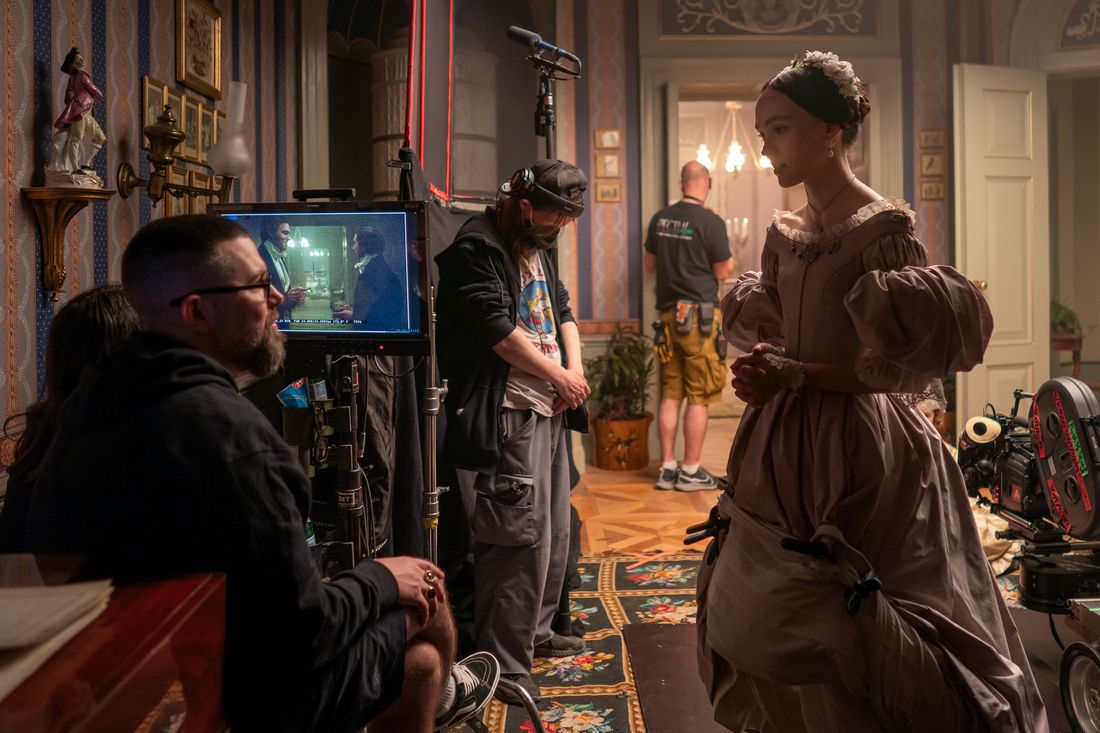
Robert Eggers, the creative mind behind this year’s eerily chilling “Nosferatu,” was nurtured in a world of books and academia. His stepfather, Walter Eggers, an English professor and provost at the University of New Hampshire (and a cinephile), played a significant role in shaping Robert’s passion for acting and storytelling. Pursuing his interest in directing and design at the American Musical and Dramatic Academy, he also produced short films, transforming his childhood fascination with horror and fantasy into a professional pathway focusing on supernatural dramas – works that continue to provoke debates about their genre classification.
In 2015, Robert Eggers ventured into feature filmmaking with his debut movie, “The Witch“, which focused on a Puritan family living in the 1630s New England who suffered a series of misfortunes they believed were caused by witchcraft and Satan. The film’s script, filled with ominous undertones that hinted at supernatural forces but never definitively proved their existence, seemed unlikely to be commercially successful. To everyone’s surprise, “The Witch” grossed over ten times its $4 million budget. This success catapulted Eggers into the spotlight among a group of emerging filmmakers, including Ari Aster (“Hereditary“), Jordan Peele (“Get Out“, “Us” ), and Jennifer Kent (“The Babadook“). All these directors, like Eggers, crafted unique films that were horror-adjacent but primarily focused on themes beyond just scaring audiences.
In his subsequent movie titled “The Lighthouse“, he collaborated with his brother Max Eggers on the script. This film is a blend of Gothic comedy and psychological drama, set in black-and-white, portraying two dismal lighthouse keepers, played by Willem Dafoe in a unique Popeye-Long John Silver hybrid role and Robert Pattison. As these characters clash and lose their sanity amidst a fierce storm, the tension escalates. Despite being praised critically, it didn’t become a box office sensation, leaving some viewers perplexed as to whether Eggers was a horror director and if so, in what category. His third production, “The Northman“, is an epic, $150 million reinterpretation of the Amleth legend that inspired Shakespeare’s Hamlet, but with a gritty aesthetic reminiscent of heavy-metal album covers, extensive long shots, and a sarcastic humor that often targets its muscular protagonist (Alexander Skarsgård).
The Northman, initially a flop at the box office, still managed to garner a devoted fanbase much like The Lighthouse did before it. Interestingly, by the time it hit theaters, Robert Eggers was already engrossed in the production of Nosferatu, a project he had long envisioned since his youth. The screenplay seamlessly blends the 1922 version of Nosferatu and Bram Stoker’s 1897 novel, Dracula, along with other elements to create a narrative that is equally an operatic tragedy as it is a vampire tale. Eggers’s Nosferatu exhibits a high degree of control, carries an ominous tone, and can sometimes be cryptic, while also being graphically disturbing. The film lacks many audience-friendly aspects, including its ending, which can be interpreted as either a nihilistic downer or a cathartic act of martyrdom, depending on the viewer’s perspective.
Despite the initial skepticism, Eggers’ film has remarkably surpassed all financial expectations, raking in $135 million worldwide and earning a credible nod in Oscar categories usually reserved for genres other than horror. In a hotel room during this year’s Academy Awards voting period, we spent over an hour conversing with him. His past as an actor was palpable: Eggers is a captivating narrator with a knack for comedy and impeccable timing, visibly proud of his creations yet humble, and adept at answering questions he had just stated he’d prefer to avoid.
Did you happen to recall the first instance where you encountered the character Nosferatu, as depicted in a book at your elementary school library? It was part of a collection showcasing various monsters, and within the vampire section, there was an image of Max Schreck, the actor who portrayed the initial Nosferatu. I found it absolutely fascinating! Upon reading the description, my curiosity was piqued, and I desired to watch the film. Luckily, my mother assisted me in finding a VHS tape, which we had to order and receive through the mail after a waiting period – just as they did in earlier eras.
After watching the movie, did it meet or surpass your expectations based on the old, grainy image you saw in the library? Despite its over-the-top acting and poor quality, there was something authentic about it, perhaps due to the worn-out appearance of the VHS tape. The video was made from a low-quality 16mm print, which resulted in a lack of obvious makeup like bald caps or grease paint on Max Shreck’s face. Watching it felt like discovering a relic from the past. The iconic performance, movement, and makeup design were all there, but seeing the original, degraded VHS has a certain charm to it. I enjoy watching restored versions of the film because they are clearer and reveal details like the blue tint for night scenes. However, there’s a kind of nostalgia attached to that old, grainy VHS version.
Have you watched any other vampire movies on screen before that video? Well, I’ve seen the Bela Lugosi film and surprisingly enjoyed it, although now I find it quite tedious except for the initial Transylvanian scenes – Bela Lugosi is simply amazing there. Compared to films like Frank Langella’s, which was based on a play, the Lugosi version seemed more like a fairy tale to me. Shortly after watching the original “Nosferatu”, the Francis Coppola film “Bram Stoker’s Dracula” was released.
The Coppola version resonated deeply with me; I’ve watched it countless times. When I first saw its trailer, something clicked – a feeling I often strive to recreate in my work – that this portrayal must have been the authentic Dracula. It felt more genuine than any other vampire movie I had seen before. Gary Oldman’s performance was captivating indeed.
How did you find Oldman’s portrayal of the character? To me, it appeared more authentic compared to performances by actors such as Lugosi, Lee, or Langella. It seems that Dracula films have been progressing in a way where vampires become increasingly attractive and less monstrous over time. However, Coppola’s Dracula took a different approach from Frank Langella’s – minus the Victorian mustache and beard scenes. The creature effects were truly remarkable, especially when he transforms into his bat form, which was probably the only traditional shock moment in the movie.
One intriguing thought that’s a bit disconcerting to ponder is an earlier version of myself witnessing the werewolf transformation of Dracula engaging in intimate moments with Sadie Frost. However, this image offers quite a bit of clarity!
Occasionally, the film seemed reminiscent of David Cronenberg’s interpretation of The Fly, where the protagonist metamorphoses into a gruesome mass, yet it still embodies a love story amidst his transformation. For me, vampires have always been intriguing due to their association with forbidden topics such as sex and death, which I found fascinating even as a child, though I didn’t fully grasp or discuss them at the time. Witches too held my interest, but they were more frightening, unlike vampires, who had an allure.
So, to clarify, I’m speaking hypothetically about being a child here. The appeal was indeed the cool costumes! As for adults, playing the role of a vampire can be quite enjoyable for an actor. If I were to choose between roles, I’d pick the vampire over Jesus, simply because it seems more entertaining.
One interesting observation I’ve made while watching various adaptations of Dracula is that ancient vampires were not always depicted as consuming blood. Instead, they could suffocate their victims or even engage in lethal sexual acts with them. When they did drink blood, it was often from the chest area. From a medical perspective, cracking open the breast bone isn’t particularly practical! However, this is where the blood was traditionally drawn in early Slavic and Balkan folklore due to sleep paralysis and the sensation of pressure on the chest during vivid dreams. Furthermore, for this particular film, drinking heart blood offered a unique blend of physicality and poeticism.
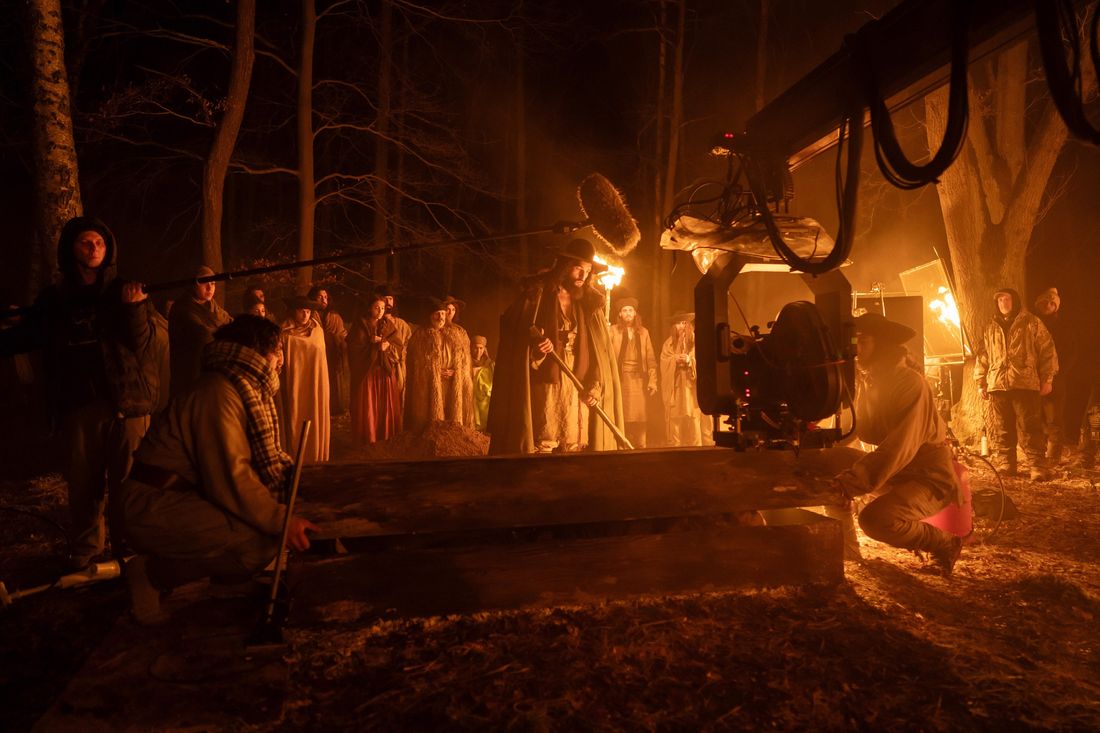
In that terrifying form, Nosferatu appears to be intimately entwined with his victims, yet he’s actually dry humping them using his spindly limbs while drawing blood directly from their hearts. This image is undoubtedly meant to be disturbing. To enhance the horror, I aimed to create a chaotic, discordant montage of various sounds, followed by an eerie quietness that would only emphasize the sound of him sucking, sucking, sucking. The sound designers have exceeded my expectations in making the slurping sound even more unsettling than I had envisioned.
In this story, set in the 17th century, I had to consider what a Transylvanian nobleman might wear. This led me to imagine Count Orlok as a type of cinematic undead creature, a blend of reanimated corpse and seductive charm. So, when you asked, “What would a dead Transylvanian nobleman actually look like?”, I envisioned elaborate Hungarian attire featuring long sleeves and a distinctive hat to portray the character.
It wasn’t unexpected that some individuals might find it disagreeable. I didn’t anticipate the mustache would stir such debate! However, isn’t it true that no 17th-century Transylvanian nobleman was beardless or clean-shaven? The forelock is often associated with Ukrainian Cossacks too. In that era, the mustache was a preferred choice among military leaders and nobility across Central and Eastern Europe due to its popularity in Baltic and Slavic cultures. And let’s not forget, Dracula sports a mustache in the novel!
Why did you consider Bill Skarsgård for the role of Nosferatu? You’ve long wanted to collaborate with him, and he was initially cast in a different role around eight or nine years ago. However, that version of Nosferatu didn’t come through, and Bill landed a part in The Northman as Alexander Skarsgård’s foppish cousin. Due to COVID, he couldn’t take that role, which was subsequently played by Gustav Lind. Inspired by Bill’s performance in It Chapter Two as the mature Pennywise, I reached out to him and proposed an audition for the part of Count Orlok, believing he could excel in it.
Who came up with the concept for the Nosferatu’s voice?
I was responsible for it. In the script, you can find a detailed description of the voice now if you look online. I envisioned Orlok as an imposing, phallic, masculine, demonic character with a deep and commanding voice that was also broken, hinting at damaged lungs due to his breathing. This aspect was something I pondered over extensively.
I provided Bill with numerous resources, among them Soviet films featuring intimidating Balkan villains sporting large mustaches and deep voices that suggested a lifelong smoking habit. Once he began working on the character’s voice, he shared recordings with me for feedback. I would suggest adjustments like “a bit more of this, a bit less of that.” Eventually, his efforts led him to collaborate with Icelandic opera singer Ásgerður Júníusdóttir to achieve the deepest possible voice for the character.
Instead of digitally enhancing the voice, we merely amplified it for a more pronounced effect. We occasionally boosted the bass to give it a richer tone, but we didn’t alter its pitch. I have raw recordings of Bill on my phone that match the voice in the movie, although they don’t have the same depth as the Dolby Atmos version.
It’s fascinating that they collaborated with an opera singer for this movie, as the term “operatic” was one that immediately came to mind when I first watched it. However, I don’t mean this in a stereotypical sense of over-the-top emotions – although it certainly has those. Instead, I refer to the way the story isn’t bound by the expectation of a happy ending, but rather, it seeks the fitting conclusion.
In essence, this movie is a melodrama, characterized by intense emotional situations and heightened expression. People might label the acting as “stylized,” yet I believe the only intentionally stylized aspect is the cinematography, which gives a fairy-tale-like, precise feel. But let me clarify – perhaps I didn’t fully convey it – the performances were intended to be naturalistic within the context of the time period’s manners, customs, and etiquette. The characters were more mannered, artificial, and rigid in their behavior compared to how we would behave in our modern daily lives. For example, sitting upright with arms mirroring a chair’s armrests was considered cool back then, even though it might seem absurd today. Conversely, someone trying to appear cool today might slouch in a chair like this [slouches into the chair with his pelvis closer to the edge of the seat and his legs splayed], right?
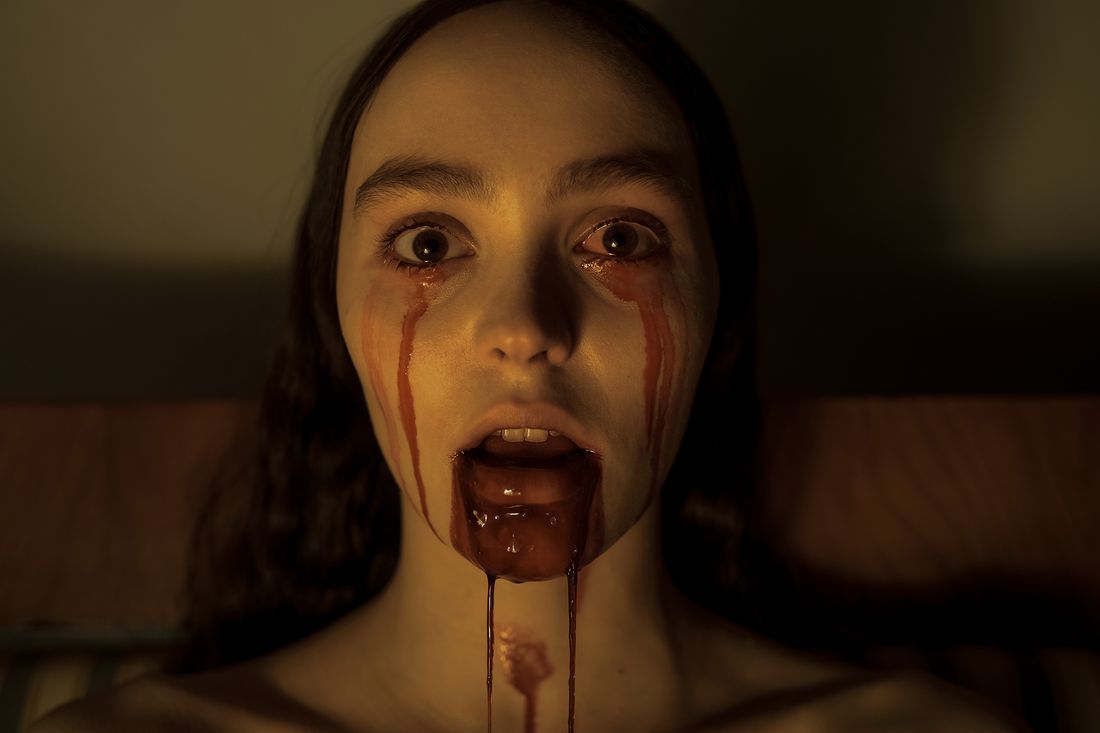
You inquired about the concept of realism holding any significance for Willem Dafoe as an actor, and he responded in the negative. So, here’s my take on it:
If you were playing a character that was being chased by a vampire, experiencing hysteria, or being possessed, what would it even mean to play these situations realistically? And if Willem Dafoe’s portrayal appears somewhat eccentric, remember that Slavoj Zizek is known for his unconventional ideas too! If Zizek were a character in a movie, your initial response might be that he seems unrealistic.
It’s correct that Willem Dafoe reached out to you following his viewing of The Witch in a cinema and expressed interest in collaborating with you. This was quite awe-inspiring for me since he was a significant acting idol during my upbringing, and he remains so even today. Initially, I felt apprehensive, but as soon as we started conversing, I felt at ease, almost as if I could connect with this individual. We seem to share similar perspectives on many things. When it feels right, it’s like acting in high school plays with my friends.
Through our collaboration on three movies, could you share some wisdom or experiences that Willem has imparted to you?
One truly remarkable performance I’ve witnessed in my lifetime took place during the press event for “The Lighthouse.” As we prepared for a Q&A, the credits were rolling, accompanied by a sea shanty. Suddenly, Willem Dafoe began to mimic a marionette-like dance, as if he had transformed into a mechanical wooden doll! For approximately 13 to 15 seconds, his dedication to this character was unwavering – it felt like he was a real wooden doll dancing to the tune. This brief yet compelling display is one reason why Willem Dafoe is an exceptional actor.
As a fellow film enthusiast, what truly captivates me about Willem is his dedication to challenging himself by collaborating with first- or second-time directors. He could’ve easily settled into becoming a character actor with a signature style, but he chooses not to. His passion for growth and exploration at nearly 70 years old serves as an inspiration for me to never rest on my laurels and always strive for more in my craft. I aspire to maintain this spirit of curiosity and growth throughout my career.
As a fan, I’ve always admired Lily-Rose Depp’s talent, even though she hadn’t taken on a leading role in a film before. With her unique look, especially suited for this period piece and the character of Ellen, I couldn’t help but imagine how captivating their on-screen dynamic could be. The thought of casting her alongside Orlok reminded me of a Death and the Maiden theme, making it seem almost destined for success.
As a film enthusiast, I handed her the script and we had a captivating conversation about it. She not only grasped my vision but also delved deeply into the character. Intriguingly, she started discussing Andrzej Żuławski’s ‘Possession’, and mentioned having watched every major Dracula film, including the lesser-known gem “Abbott and Costello Meet Frankenstein”. I expressed my hopes for her performance but emphasized that there would be an audition, and advised her to prepare meticulously. To aid her, I shared some materials, yet she took the initiative to do most of the preparation independently.
Could you describe the audition?
The audition was quite intense. She had to perform the scene where she delivered a monologue about death, followed by a substantial portion of the main scene with Thomas. Although it lacked the polish seen in the final film, her performance radiated the same raw, fearless determination. She was drooling and throwing herself on the floor, demonstrating her ability to carry out such actions. Even the usually emotionless casting director and videographer were moved to tears by her powerful performance. I could talk endlessly about Lily’s acting skills. All of the actors shared the same passion for their roles, which was a truly inspiring gift.
The performance by Nicholas Hoult in portraying fear is truly commendable. This role presented a unique challenge for him, and although it lacks the flamboyance of Lily or Bill’s characters, it demands great skill and resilience. In the climactic scene, he depicts a strong hero struggling, repeatedly failing, under immense pressure. Such portrayal is not easy to pull off.
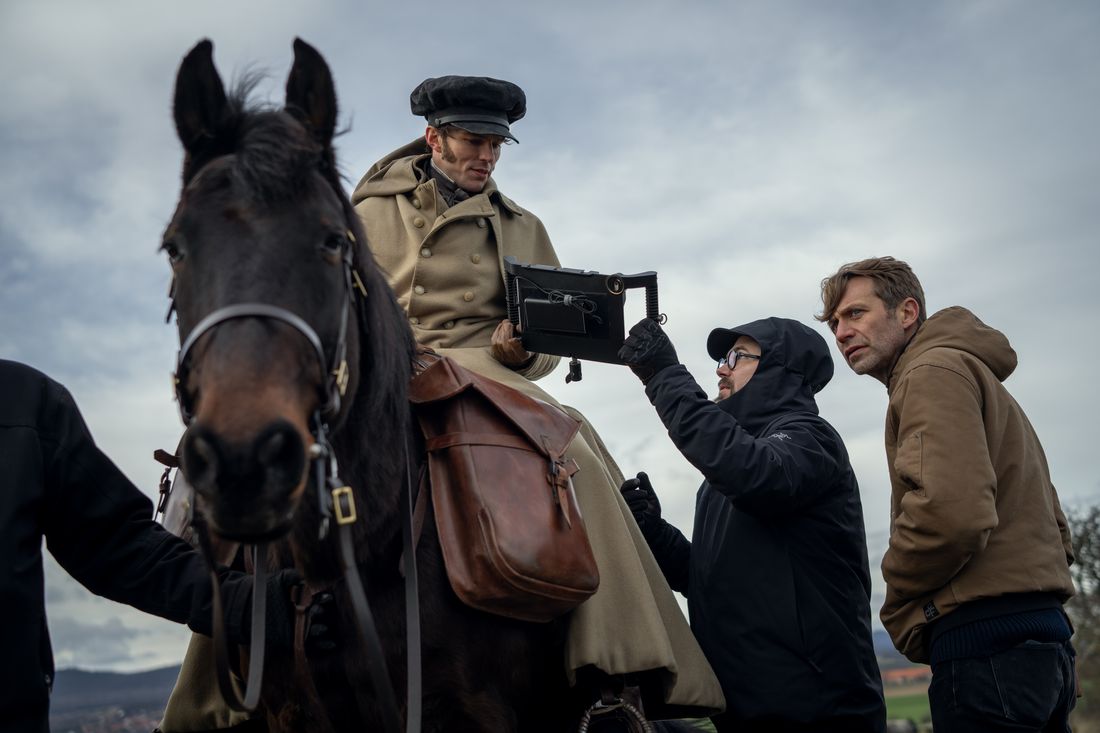
What’s your view on how this movie concludes?
I, as the storyteller, prefer not to define it. I aim for a complex finale where each viewer may draw their own conclusion. The beauty of universal tales lies in their open-ended nature, allowing multiple interpretations by various members of the audience.
For the first time, I left the theater after watching The Witch questioning the symbolism of its finale. It seems that all your films share this intriguing quality – leaving me pondering their meanings for weeks on end, like an intoxicating waltz.
In an ideal scenario, wouldn’t it be great to be like Terrence Malick and avoid giving interviews? However, we don’t live in an ideal world, do we? So, even though it might not be our first choice, there is a certain worth in promoting your work, or whatever it may be.
fundamentally, regarding the conclusion of “The Witch”, it holds true if you choose to perceive it as real. This perspective mirrors the attitude of characters in my movies.
Willem noted that he admires your work because it doesn’t coddle audiences, instead immersing them directly in different eras or perspectives without a gentle transition, much like being thrown into the deep end of a pool. He also stated that none of your characters embody a contemporary viewpoint entirely. However, while acknowledging this impossibility, you strive to maintain a distance from modern sensibilities as much as feasible. For example, in Nosferatu, Nicholas Hoult’s character is somewhat relatable, and the Harding family shares some similarities, but they still adhere to their 19th-century belief system and moral code. When discussing The Witch, he mentioned that creating a period setting was difficult because when the baby vanishes at the beginning of the movie, some audience members might question why the characters aren’t searching for the child. This is due to the fact that in the 17th century, it was common belief that children were likely to die, so forming close relationships with them before they turned seven was discouraged.
In the classic film Nosferatu, Ellen’s character stands out. Director F.W. Murnau and his team cleverly transformed her into the heroine by the movie’s end. I found that telling the tale from her perspective could lead to a richer, more engaging narrative, offering an emotional and psychological depth beyond a traditional real-estate agent adventure story. This society, as portrayed in the film, seems oppressive for women, much like wearing a tight corset. However, it appears no one in this story embodies a modern 21st-century perspective, such as proto-suffragettes with fencing skills.
An intriguing alternative was considered instead of making Lily don her husband’s trousers and venture out to slay the vampire personally. I found it captivating to depict a female character with profound insight into the shadowy aspects of humanity and a link to a supernatural realm, who couldn’t develop these traits – a woman who is silenced, dismissed as insane or hysterical, yet transforms into someone assertive in a world that denies her autonomy. She asserts, “I must find him,” but she’s forbidden even to step out of the men’s view and is physically restrained to her bed.
In my review of the movie, I’ve found myself grappling with the conflicting perspectives on Ellen’s character. Some viewers see her as a bold heroine, making selfless sacrifices for the greater good, while others view her as a tragic figure, seemingly devoid of agency in a story that seems deeply rooted in misogyny.
As a critic, I was recently asked if there could have been an alternative ending where Ellen didn’t have to sacrifice herself. Pondering this question, I find myself drawn into the complex web of feminist literary discourse surrounding Victorian authors and their portrayal of women. On one hand, these stories often depict women as objects of sexualization, only to punish them for their perceived transgressions.
However, there’s another school of thought that argues Ellen represents a fascinating archetype—a woman who understands the darker aspects of humanity and is also sexualized, yet repeatedly emerges as the savior of Victorian culture. This perspective offers an intriguing counterpoint to the more critical view, suggesting that perhaps her character serves as a subversive commentary on societal norms of the time.
Regardless of one’s interpretation, it cannot be denied that the movie grapples with some deep-seated themes and continues the ongoing conversation about gender roles in literature.
So, she doesn’t die for her own sins but rather in a sense for ours? Yes, that seems accurate. I would add that the sacrifice is indeed a significant aspect, but so is vengeance. There’s also an unusual kind of sacred union, more like a bond, and a fulfillment of some sort of destiny. Even though Orlok is a despicable abuser, he may be the only one who can help Ellen in a unique way, if you will. It’s complex, with multiple layers, not just black and white.
This movie revolves around a character named Orlok who’s a monster, and it narrates the tale of a young girl who tragically experienced an act of sexual violence. However, let me share another perspective that might resonate with your interpretation. This film could also be seen as a story about a demon in love, similar to Cathy and Heathcliff in “Wuthering Heights.” But much like their relationship, it’s questionable whether Orlok genuinely loves the girl or if his intentions are more sinister—to control and possibly destroy her. Despite its allure, this relationship is certainly not a healthy one.
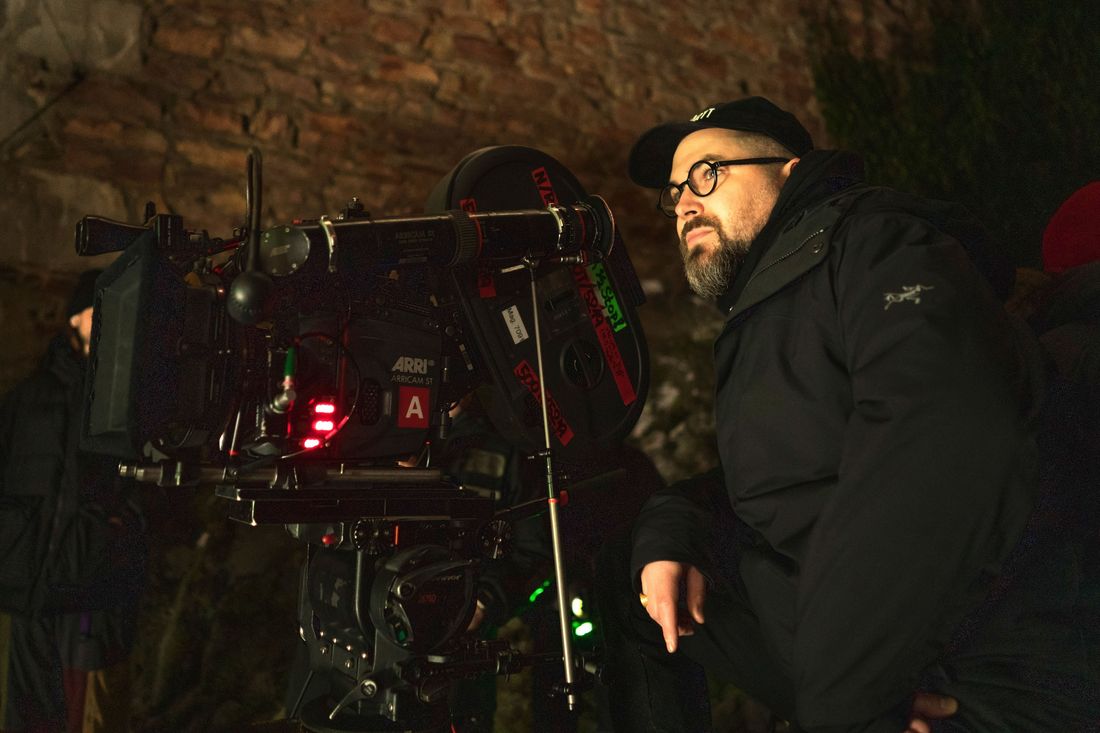
In what benefits does withholding a contemporary connection within historical fiction provide for readers? I encountered some difficulties while crafting a narrative with a contemporary introduction. My thoughts were swirling with questions like, Should I touch upon this topic? Should I address that issue? What about these aspects and those? However, immersing oneself in the intricate details of a past civilization seems to offer numerous insights into our identity or future direction. Additionally, it allows readers to draw their own interpretations, which I find liberating as a storyteller.
One intriguing query posed in the film is whether evil stems externally or internally. It’s not explicitly clear if the movie provides a definitive response, but it seems to suggest that evil can originate from multiple sources. In my opinion, the film leaves room for interpretation on this matter.
Given that we live in a modern world, the idea of evil as an independent entity invading us can be hard to accept. So, how do you reconcile such beliefs with our contemporary way of thinking? As someone who acknowledges the limitations of my modern mind, I find it more engaging to examine these concepts through films, rather than delving into real-life practices like ritual magic.
If you happened upon the Necronomicon, would you decide to recite it or simply shut the book instead?
Is it one of your intentions when creating a horror movie to startle or frighten viewers, using the simple technique of a sudden shock or surprise?
In your film analysis, you’ve touched upon an intriguing perspective about horror stories, which aligns with Ellen’s query. Essentially, these stories delve into the exploration of our own inner darkness, a universal human and societal trait that carries significant weight. While jump scares can be thrilling, they may not hold profound meaning. The true essence of horror lies in those tense moments that keep us on the edge, making us fear the unknown and the possibility of anything happening. This sense of uncertainty is what ultimately makes monsters terrifying.
Read More
- INJ PREDICTION. INJ cryptocurrency
- SPELL PREDICTION. SPELL cryptocurrency
- How To Travel Between Maps In Kingdom Come: Deliverance 2
- LDO PREDICTION. LDO cryptocurrency
- The Hilarious Truth Behind FIFA’s ‘Fake’ Pack Luck: Zwe’s Epic Journey
- How to Craft Reforged Radzig Kobyla’s Sword in Kingdom Come: Deliverance 2
- How to find the Medicine Book and cure Thomas in Kingdom Come: Deliverance 2
- Destiny 2: Countdown to Episode Heresy’s End & Community Reactions
- Deep Rock Galactic: Painful Missions That Will Test Your Skills
- When will Sonic the Hedgehog 3 be on Paramount Plus?
2025-01-14 22:55